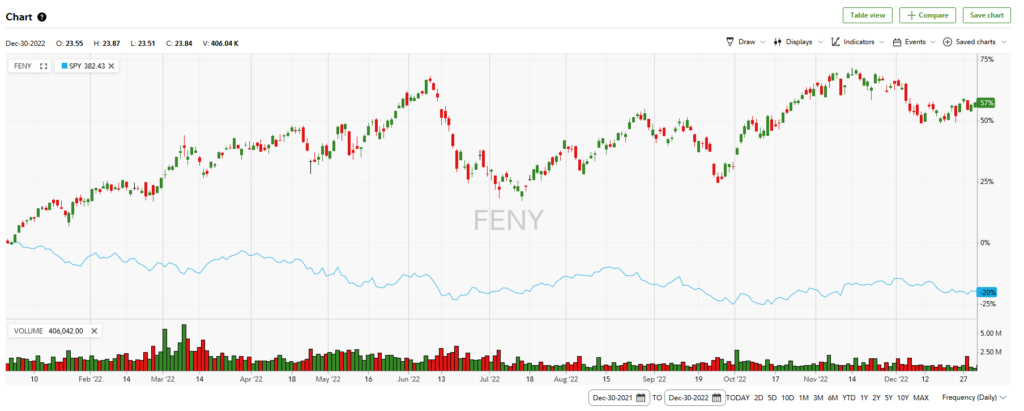Traditional Energy Continues To Look Undervalued

Photo by American Public Power Association on Unsplash
A few months ago, I published a blog piece over at Seeking Alpha that discussed how the traditional energy industry appears to be dramatically undervalued in the current market environment. This is partly due to the rising importance of environmental, social, and governance ratings at major fund houses such as BlackRock (BLK), which generally discourage investment in anything related to fossil fuels. This has had the effect of reducing the capital available to many of these companies. This is a big reason why numerous midstream master limited partnerships cut their distributions over the past few years and have been aggressively paying down their debt. We have seen a similar trend at companies like Diamondback Energy (FANG), which have opted to simply hold production steady and pay their free cash flow out to investors instead of attempting to deliver growth. After all, the market has not been rewarding traditional energy companies for the growth that they have delivered over the past decade, which is why the entire energy sector greatly underperformed the S&P 500 Index (SP500) in the years since the Great Recession of 2009.
This did change somewhat in 2022, as the energy sector substantially outperformed the S&P 500 Index:
(Click on image to enlarge)

Source: Fidelity Investments
This was largely due to high energy prices, which as I mentioned in a previous post were the biggest cause of the high inflation rates that we experienced that year. However, despite the strong performance that this sector delivered in 2022, it still appears to be undervalued on several metrics. Thus, it still makes a certain amount of sense to add energy stocks to your portfolio today.
Forward P/E Ratio
One ratio that we can use to value energy stocks is the forward price-to-earnings ratio. This ratio tells us how much we have to pay today for each dollar of earnings that a given company is expected to generate over the next year. Here is how the various major American energy companies compare to one another:
| Company | Forward P/E Ratio |
| ExxonMobil (XOM) | 11.59 |
| Chevron Corporation (CVX) | 11.68 |
| APA Corporation (APA) | 6.37 |
| Occidental Petroleum (OXY) | 10.53 |
| Marathon Oil (MRO) | 8.32 |
| ConocoPhillips (COP) | 10.23 |
All figures courtesy of Zacks Investment Research
As of the time of writing, the forward price-to-earnings ratio of the S&P 500 Index is 18.20:
(Click on image to enlarge)

Source: YCharts
As we can clearly see, the valuation of the S&P 500 Index has been dropping considerably, however, it still remains considerably more expensive than any of the major energy companies listed above. Thus, this metric is clearly pointing to an undervaluation in the energy sector.
PEG Ratio
Another ratio that we can use to value energy companies is the price-to-earnings growth ratio, which is the ratio that I frequently use to conduct valuations in my public articles. This ratio is a modified version of the familiar price-to-earnings ratio that takes a company’s forward earnings per share growth into account. A price-to-earnings growth ratio of less than 1.0 is a sign that a company’s stock may be undervalued relative to its forward earnings per share growth and vice versa.
This chart shows the above companies’ price-to-earnings growth ratios at the current stock price:
| Company | PEG Ratio |
| ExxonMobil | 0.54 |
| Chevron Corporation | 0.82 |
| APA Corporation | 2.62 |
| Occidental Petroleum | 0.48 |
| Marathon Oil | 0.42 |
| ConocoPhillips | 0.56 |
All figures courtesy of Zacks Investment Research
As we can clearly see, with the notable exception of APA Corporation, all of these companies appear to be substantially undervalued relative to their forward earnings per share growth. This is a notable difference from the S&P 500 Index as a whole, which still sees most companies looking substantially overvalued despite the decline that occurred last year. For example, as of the time of writing, Alphabet (GOOG) has a price-to-earnings growth ratio of 1.38 and Apple’s (AAPL) ratio is a much higher 2.26.
Thus, the energy sector as a whole appears to be significantly undervalued relative to the forward earnings per share growth that the sector is expected to deliver over the next three to five years.
More By This Author:
Gas And Oil Prices Rise, Likely To Continue
Signs Of A Worsening Jobs Market
The U.S. Consumer Is Hitting A Brick Wall, Negatively Impacting Discretionary Stocks
Disclosure: I am long various energy-focused funds that may have a position in any of the stocks mentioned in this article. I exercise no control over these funds.
Disclaimer: All information ...
more


